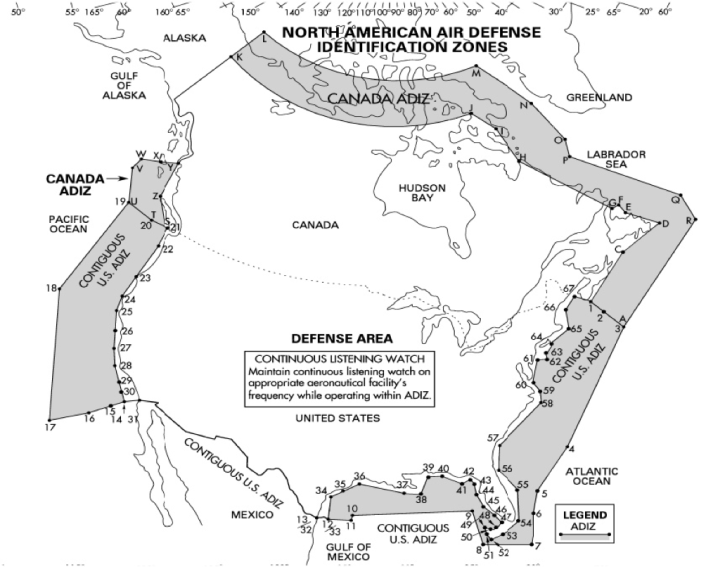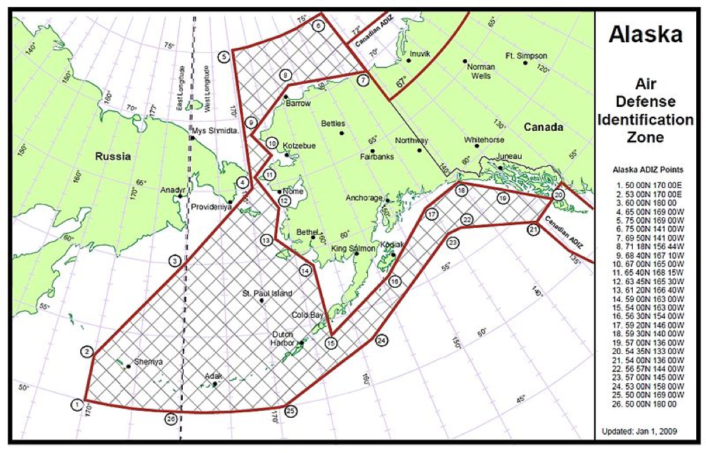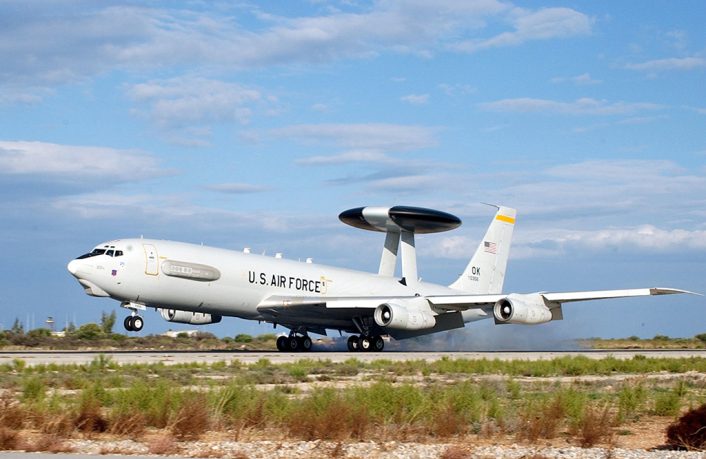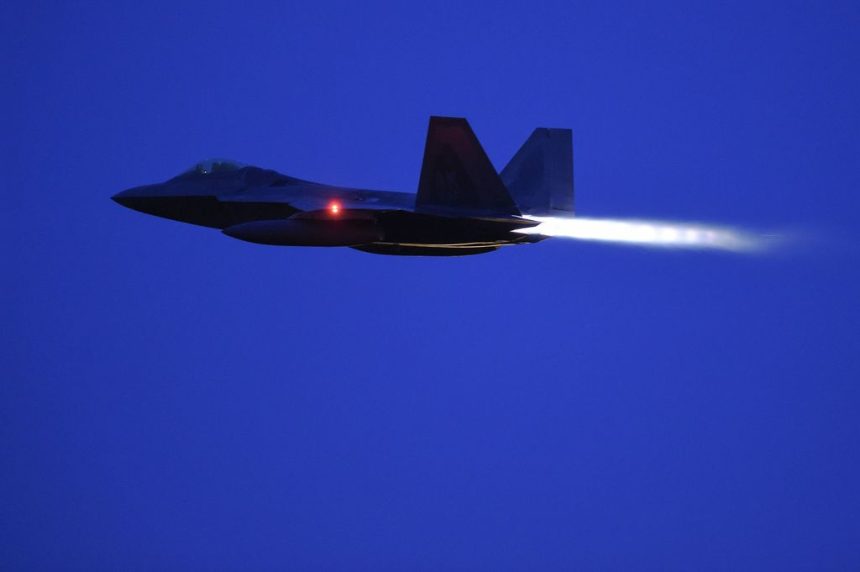For two days in a row, Russian Air Force Tu-95 Bear bombers flew near Alaska’s airspace.
On Apr. 17 the U.S. Air Force scrambled two F-22 Raptor stealth jets, one E-3 Sentry AEW (Airborne Early Warning) aircraft and a KC-135 tanker (according to some reports, others don’t mention the Stratotanker’s presence) to intercept two nuclear-capable Bears flying roughly 100 nm southwest of Kodiak.
The stealth jets took off from Joint Base Elmendorf-Richardson and intercepted the Russian aircraft inside the ADIZ (Air Defense Identification Zone), “the airspace over land or water in which the identification, location and control of civilian aircraft is performed in the interest of national security.”
ADIZs may extend beyond a country’s territory to give the country more time to respond to possible hostile aircraft: in fact any aircraft flying inside these zones without authorization may be identified as a threat and treated as an enemy aircraft, leading to an interception and VID (Visual Identification) by fighter aircraft.

The F-22 escorted the Tu-95s for 12 minutes (27 for some sources) before the Russian bombers headed back.
On the following night, that is to say few hours after the first “visit”, the Bear flew again inside the ADIZ but this time, the US Air Force opted to not scramble fighter jets but only the E-3 AWACS (Airborne Warning And Control System). It’s not the first time the Russian Bears fly in the ADIZ, not even the first time that no fighter jet is scrambled to meet them.

“Combined scramble”
Let’s have a look at the first episode. It’s worth of note that along with the 5th generation interceptors, NORAD (North American Aerospace Defense Command) called for an alert take off by an E-3 Sentry. Most of times, QRA (Quick Reaction Alert) take offs by armed interceptors are supported by tanker aircraft, not by AEW assets: the fighters are guided to the unknown aircraft by ground air defense radars. That’s why I want to draw your attention on this “combined scramble.”
Launching the AEW along with the fighters is a “tactics” that allows the Air Defense to extend the radar coverage and to better investigate the eventual presence of additional bombers or escorting fighters flying “embedded” with the “zombies” (as the unknown aircraft are usually dubbed in the QRA jargon). At the same time, the presence of an E-3 allows the Raptors to improve their situational awareness while reducing the radar usage and maximizing as much as possible their stealth capability (even though it must be remembered that F-22s in QRA usually carry fuel tanks that make them less “invisible” to radars).
A combined AEW/F-22 scramble provides a more effective way to counter a possible “strike package”.
A long range sortie is not easy to plan. Even more so a strike sortie: the bomber are not only required to fly inbound the target (TGT) and reach a convient position to simulate the attack and weapons delivery, they also need to take in consideration many other factors. First of all “what is your goal?” Do you want to train for a realistic strike? Or do you want to “spy” or show your presence or posture?
Other factors are distance from own country, opponent’s defense capability, minimum risk routing according to the threats, presence of DCA (Defensive Counter Air), supporting assets, etc.
Usually, during a strike sortie, bombers are considered the HVA (High Value Asset), the one that must be protected. For this reason during the planning phase they are always escorted by fighter and protected by the Ground to Air threats by means of SEAD/DEAD (Suppression/Destruction of Enemy Air Defenses), EW (Electronic Warfare) and everything is needed to let them able to hit their targeted.
However, escorting a strategic bomber is not always possible (nor convenient): considered their limited range, the presence of the fighters would heavily affect the long range planning, requiring support from multiple tankers along the route.
For this reason, although the Russians visit the West Coast quite often, they usually are not escorted by any fighter jet (as happens, for instance, in the Baltic region, where Tu-22s are often accompanied by Su-27 Flankers).
Still, it’s better to be prepared and trained for the worst case scenario and this is probably the reason why NORAD included an E-3 AEW in the QRA team: to have a look at the Tu-95s and make sure there was no “sweep” fighters or subsequent “package”.
Based on my experience, the ones of last week were just simulated strike sorties with the only aim to test the U.S. tactics and reaction times. Something that happens quite frequently. There is also the chance the Bears were sent there while another Russian spyplane was in the vicinity to “sniff” the Raptors electromagnetic emissions. However, there are no reports of Il-20 ELINT aircraft in the area.

Top image: file photo of a Raptor taking off from Joint Base Elmendorf-Richardson.









